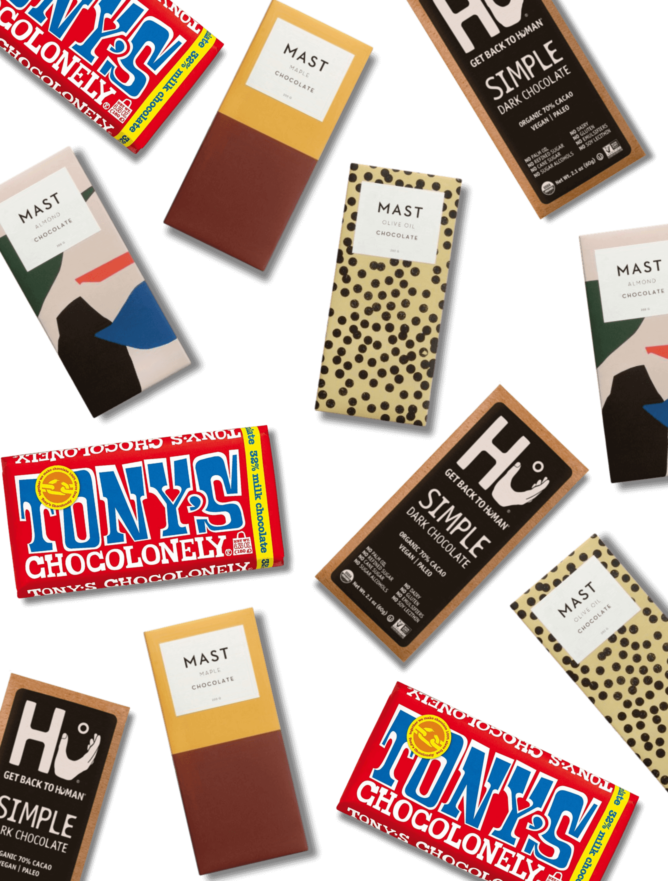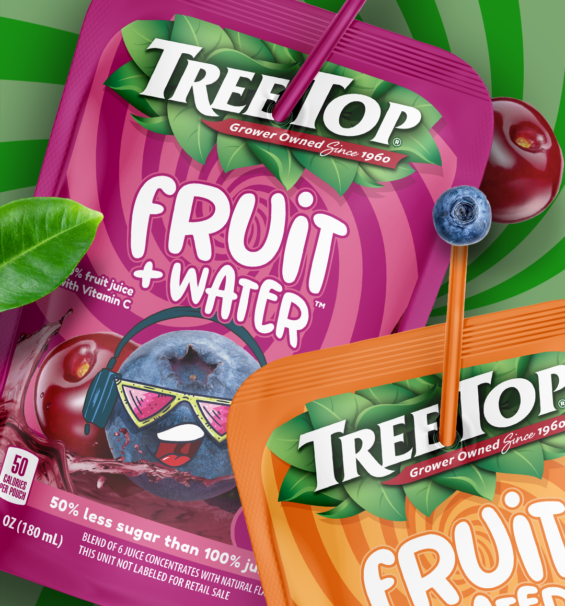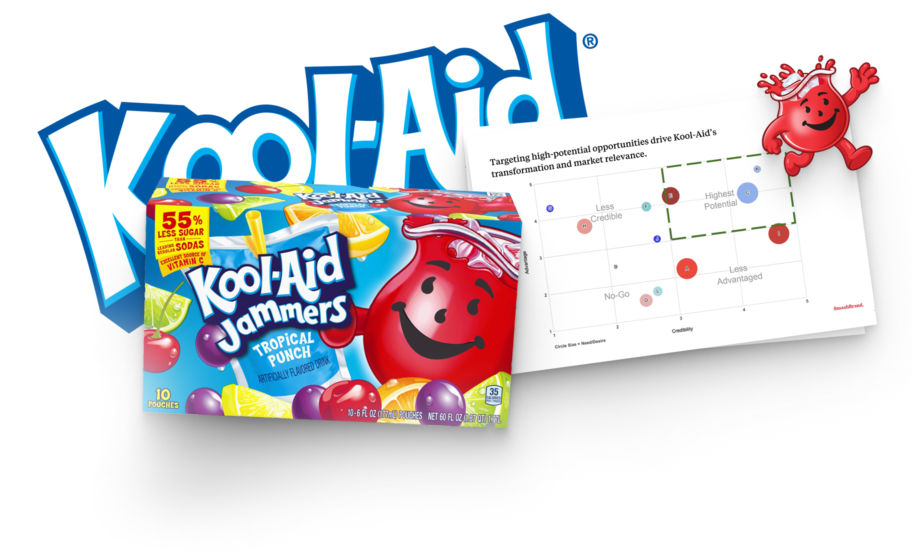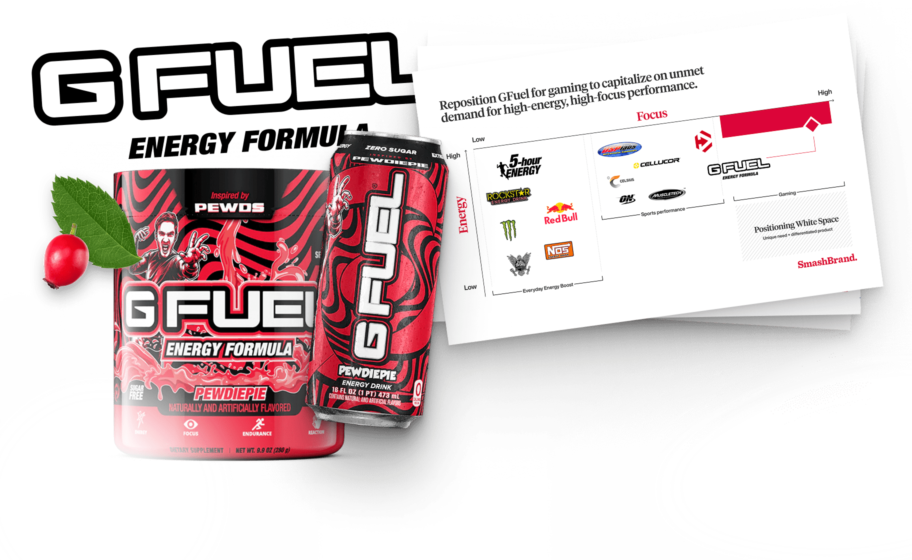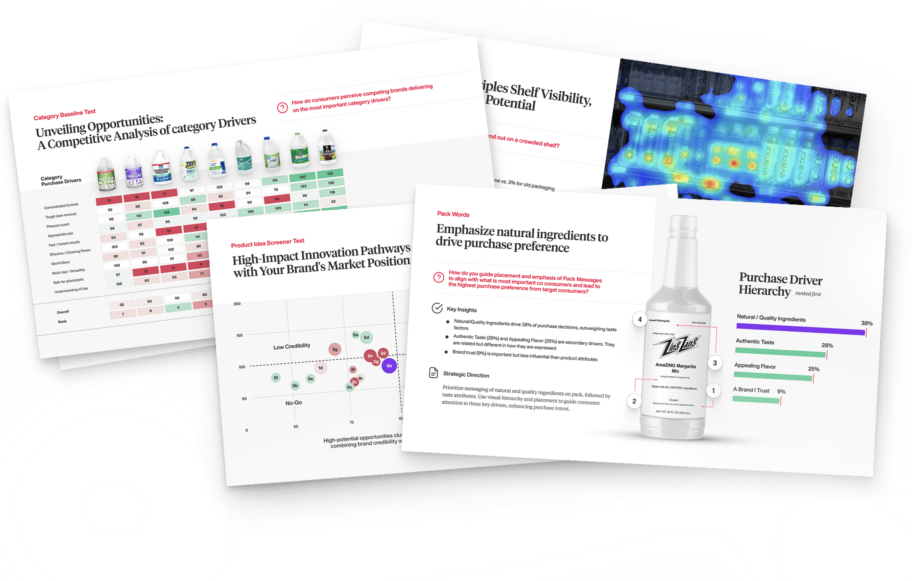The most successful brands in the consumer packaged goods (CPG) industry don’t just sell products—they master the CPG experience to drive revenue and dominate their category. These brands create such strong CPG brand loyalty that consumers hesitate to switch, instinctively sticking with what feels familiar and trusted. This deep connection isn’t accidental—it’s the result of mastering the CPG experience at every touchpoint.
While most brands aim to engage their audience and build lasting relationships, few genuinely deliver an experience that leaves a lasting impact. Understanding the CPG experience meaning and leveraging customer data are crucial for any CPG company looking to break through. This article uncovers the key to building a brand experience that keeps consumers returning.
What is CPG experience?
CPG experience resembles brand experience but speaks specifically to consumer products. Like brand experience, the meaning of CPG experience is to quantify consumers’ overall interaction and perception of the CPG brand’s products.
The experience involves every touchpoint, including what a potential customer sees in marketing campaigns and the consumer’s final use of your product. It also includes consumer conversations and interactions with your brand throughout the pre, during, and post-purchase timeframe.
By quantifying the CPG experience, your brand will further understand consumer preferences and how they feel about your company. This will allow you to take action to improve the overall experience with your target audience.
Consumer research to drive a positive experience.
New brands do not have to fly blind as they enter the CPG market. Even small companies can access insightful data based on historical and real-time consumer data within the CPG industry. By performing preliminary research about your category within the CPG market, you can learn a lot about what causes consumer demand and drives brand recall.
Engaging consumers to elevate the CPG experience.
How engaged are consumers with your brand? Many companies in the CPG sector believe they’re building connections, but their marketing efforts often fall short of creating a meaningful CPG customer experience. Bridging this gap requires a well-planned strategy that boosts engagement and provides actionable insights into consumer behavior.
A strong CPG brand marketing experience doesn’t just encourage repeat purchases—it fosters loyalty and long-term advocacy. By leveraging digital marketing and integrating financial services for a seamless buying process, brands can refine their approach based on real insight and emerging CPG trends. Additionally, as digital transformation continues to reshape the industry, brands must adapt by enhancing every touchpoint of the consumer packaged goods experience.
Now, let’s break down the three critical stages of the CPG experience required for lasting brand success.
Pre-purchase experience.
Unless it is an impulse purchase, consumers already understand (logically and emotionally) your CPG product, which impacts their current and ongoing experience with your brand.
Crafting effective marketing campaigns.
One challenge in the CPG sector is aligning branding and marketing to enhance the consumer brand experience. While marketing efforts focus on driving action, branding builds emotional connections. The key to success is a seamless blend of both.
A CPG marketer can collaborate with brand managers to ensure consistent messaging that highlights the CPG brand’s meaning while reinforcing the product’s story and value. Digital marketing, influencer partnerships, paid and organic social media, and strategic in-store displays shape every consumer goods experience.
Beyond traditional marketing, CPG brands can amplify their impact through experiential brand activation. Engaging consumers with unique, memorable interactions fosters brand loyalty by improving the customer experience. Large-scale CPG brands may partner with agencies specializing in immersive experiences, generating word-of-mouth buzz and viral content.
To stay ahead, brands must leverage actionable insights, embrace digital transformation, and adapt to emerging CPG trends. Whether through data-driven campaigns or innovative activations, a well-executed strategy ensures a powerful and lasting CPG experience.
Emphasizing sustainability and ethical practices.
Sustainability is no longer just a trend—it’s a consumer expectation. Sustainable CPG brands are in the spotlight, with media and consumers scrutinizing their efforts. However, promoting eco-friendly initiatives is no longer enough as sustainability becomes more mainstream. To truly enhance the CPG business and improve the CPG marketing strategy, brands must take meaningful action, communicate their impact transparently, and avoid falling into the trap of greenwashing.
Companies like General Mills set a precedent by integrating sustainability into their supply chain management, ensuring ethical sourcing, waste reduction, and social responsibility. To stand out, brands must go beyond marketing claims and demonstrate real change, building trust and long-term consumer loyalty.
Enhancing digital interactions.
A strong digital presence is essential for any CPG business looking to grow in today’s market. Leveraging data strategy, AI, and automation can streamline marketing efforts, reduce costs, and improve consumer engagement. However, technology alone isn’t enough—human interactions remain crucial. A well-rounded CPG marketing strategy balances automation with personal touchpoints to create a stronger consumer trend toward brand loyalty.
Even budget-friendly CPG food brands and personal care products can benefit from prioritizing digital interactions. Whether through social media, direct customer support, or personalized content, these efforts create a ripple effect, influencing not just one consumer but their entire network.
By enhancing digital engagement and integrating sustainability into their supply chain management, brands can build a future-proof business that resonates with modern consumers—both online and in retail stores.
Leveraging influencer partnerships.
As a medium, CPG influencer marketing is still a young and evolving advertising category. Since its inception, influencers have (and continue) to be a fast way to further consumer experience with your brand. Not only does it heighten brand awareness for new CPG brands, but it also serves to remind your existing customers why they should stick to your brand.
To take advantage of the experience benefits of influencer partnerships, leverage them across your CPG marketing strategies. Consider how fitness brands that sponsor influencers use their influence across all digital and print channels, even having these influencers attend in-person events.
Purchase experience.
The point of purchase is pivotal for the CPG experience. Consider this: this is when people form the most significant association with your brand, as they spend their hard-earned money to try your product. How the product is presented on the shelf, in hand, and at checkout is crucial to the customer’s perception of your brand.
Harnessing the power of personalization.
Consumers must feel that your product solves a problem. Whether it’s a feeling they hope to experience or an answer to a pain point, they mostly purchase your product because they believe you to be the solution. Creating this response in the consumer’s mind is nearly impossible without product personalization.
Personalization begins by clarifying your target audience and positioning yourself to attract this consumer base effectively. All product offers and point-of-purchase communication should create a sense of exclusivity and emotional connection. Much of this understanding occurs during brand development, where we leverage data by performing research and consumer testing.
Personalization is a critical factor for category giants and emerging CPG brands. A brand should strategically improve in this area at every level.
Designing memorable packaging.
Packaging plays a significant role in shaping the CPG experience. It serves as the first point of contact between the consumer and the product. An attention-grabbing, aesthetically pleasing CPG packaging design can evoke positive emotions and increase the likelihood of purchase. Brands should create consumer goods packaging designs that reflect their values, resonate with their target audience, and stand out on store shelves.
Working with a CPG packaging design agency is the right move for brands in competitive categories, as their experience significantly reduces the amount of research your brand must conduct to understand the category and sales channels.
Ensuring Consistent Product Placement
It isn’t just the omnichannel brand that takes up retail shelf space in a retailer. Even the DTC company needs to ensure consistent product placement everywhere they are visible (think Google Shopping and affiliate sites).
For e-commerce and brick-and-mortar retailers, this also means keeping a close eye on your supply chain, as out-of-stock items will immediately change your product placement. Each time your product is less visible or invisible to shoppers, it lowers their experience with your brand.
Post Purchase Experience
Your company must take preventative measures to ensure the best post-purchase experience possible. Everything from the packaging to the number of errors CPG manufacturers make during production plays a role in the experience and is pivotal to creating repeat purchases.
Meeting Consumer Expectations
Consumers expect your product to deliver based on what they’ve seen in marketing, at the point of purchase, and through their previous category experience. If you fail to meet (or exceed) these expectations, your unstable foundation will lead to a poor experience.
Striving Towards Brand Loyalty
Creating brand loyalty doesn’t end after the first purchase. Customer loyalty is generated by consistently delivering the same messaging and post-purchase experience, which compounds the lifetime experience.
Ensuring Seamless Customer Service
Consumer packaged goods companies shouldn’t just improve customer service because it’s the right thing to do; they should do it because it enhances the customer experience. Keeping both of these at the front of your strategy gives you even more reason to seek CANI (constant and never-ending improvement)
To provide exceptional customer service, your brand should be:
- Addressing inquiries at a fast rate
- Leveraging technology such as advanced call center software.
- Reducing friction from the returns process
- Actively seeking consumer feedback.
- Leveraging robust contact center solutions for better experiences.
Having seamless customer service also means not sacrificing the quality of the experience to be more efficient. Chatbots are an example of how you can provide a more efficient system for customers but create more work for them than is worth.
Loyalty Programs
Consumer brands use loyalty programs to create urgency, creating greater customer demand through reward systems. However, loyalty programs should also aim to improve the experience as part of the marketing strategy.
Gamification is a powerful tool to nurture experience, and CPG brands can use this to their advantage. Whether you are a water bottle brand or produce organic free-range eggs, you must have a loyalty program to improve customer retention and keep your brand experience in mind.
Omnichannel Experience
Omnichannel isn’t about presenting yourself to more eyeballs; it’s about giving your existing customers more touchpoints during their monthly shopping. Statistics show that 75% of shoppers visit more than one store weekly —personally, my family shops at three stores per week. I guess we fall within the 67% of those who raised their hand to more than one and then raised their hand to more than two.
So it isn’t just DTC brands that must be strategic when shifting to omnichannel. Every CPG brand must revisit its existing channels, evaluate each platform aspect, from page experience to how customers interact with omnichannel call centers, and look for the next opportunity and the correct time to launch.
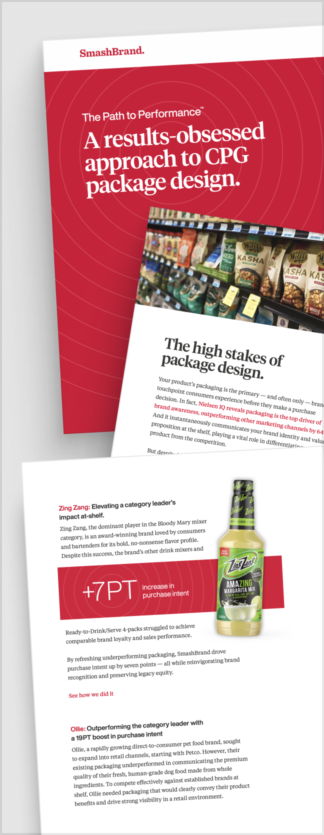
Path to Performance™
Taking a results-obsessed approach to CPG package design.
Learn how SmashBrand’s proprietary process – rooted in scientific principles, informed by data, and validated by your target audience – takes the guesswork out of package design and delivers guaranteed results.
CPG Experience Tips
As a consumer packaged goods agency, our experience with brands has shown us common themes in what makes a brand successful. Here are some tips from the SmashBrand archives.
You Must Create The Experience
If you do not actively work to create the experience, consumers and media will create it for you. Whether it’s fast-moving or durable goods, your company must take the reins on where the overall experience goes. Gaining agency over the experience means you must address anything that has been decided for you.
Any wrong or damaging consumer assumptions about your brand can and should be addressed. Rather than being silent about a specific aspect of the brand, use it to further your brand story. You can do this through innovative packaging at the point of purchase or by including it in your social media marketing.
For example, if you make organic, gluten-free, paleo cookie crumbles, no matter your best production efforts, create videos showing how people can use those crumbles as a topping. Heck, this may even lead to a line extension opportunity. You never know!
Become A Data-Driven Brand
Data and analytics play a vital role in understanding consumer behavior and preferences. But if it’s important, why do most brands make investing in this a one-off occurrence? When you define yourself as a data-driven brand, investing in CPG market research and consumer testing becomes a monthly line item.
Making it a monthly line item keeps it top of mind and gives more reason to schedule meetings to discuss all the CPG insights you discover on a more regular cadence. The more often you discuss what you have learned, the better you can tailor your marketing campaigns and improve the customer service experience.
Establish relevant key performance indicators (KPIs) as a data-driven brand. CPG KPIs include customer satisfaction scores, repeat purchase rates, social media engagement, and brand sentiment analysis. Regularly monitoring and analyzing KPIs for a consumer packaged goods brand ensures you stay focused on the right things.
Strong Ties Loosely Held
Consumer preferences are not static. They are subject to change at a moment’s notice. Whether it is new research about an ingredient leading to a product innovation or a new style gaining traction thanks to an influencer, preferences evolve (for the better or the worse). Don’t be so committed to a particular preference that you miss out on new market trends.
Conducting market research and keeping your finger on the pulse of any industry developments helps you stay informed and agile. If the situation arises, it puts you in a position for a successful brand pivot.
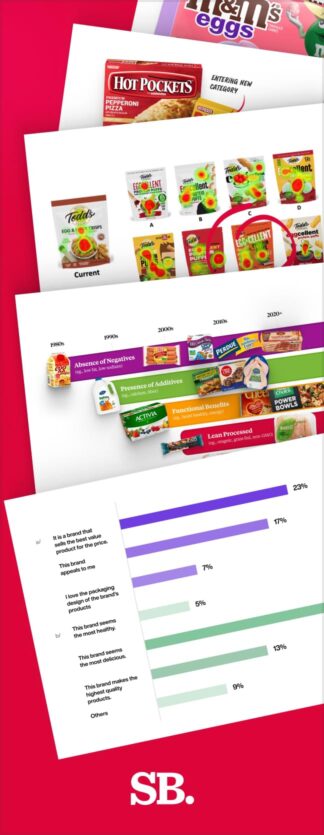
Nice Package
Don’t miss out on our monthly newsletter Nice Package!
Each month, we deliver a data-driven newsletter directly to your inbox, unpacking a critical topic in the FMCG & CPG industry.
"*" indicates required fields
Data-Driven Brand Development For CPG Brands
SmashBrand is a brand development agency for FMCG and CPG companies. From brand strategy to packaging design testing, our Path To Performance™ process guarantees a retail performance lift. Book a time to discuss your project with our team.
Frequently Asked Questions
How & Where Should I Begin To Improve My CPG Experience?
Improving the experience of your brand first begins with a discovery process where you thoroughly look to understand the brand’s history, including all brand materials and consumer feedback. During brand discovery, you work to understand the brand’s strengths and weaknesses before you then look at the competitors and channels where you identify opportunities for your CPG experience can stand out and get noticed.
Are There Agencies That Can Help Me Improve the Brand Experience with my target audience?
Yes, a CPG brand strategy agency can help you understand how to improve the overall experience. They will guide you through the process, often providing specific deliverables for your brand to use in all branding and marketing campaigns.
Subscribe to
Nice Package.
A monthly newsletter that unpacks a critical topic in the FMCG & CPG industry.
Free Resource.

CPG product repositioning guide.
Explore the five undeniable signs your CPG product needs repositioning along with strategies for leveraging consumer insights for a guaranteed market lift.
Learn More About CPG product repositioning guide.
